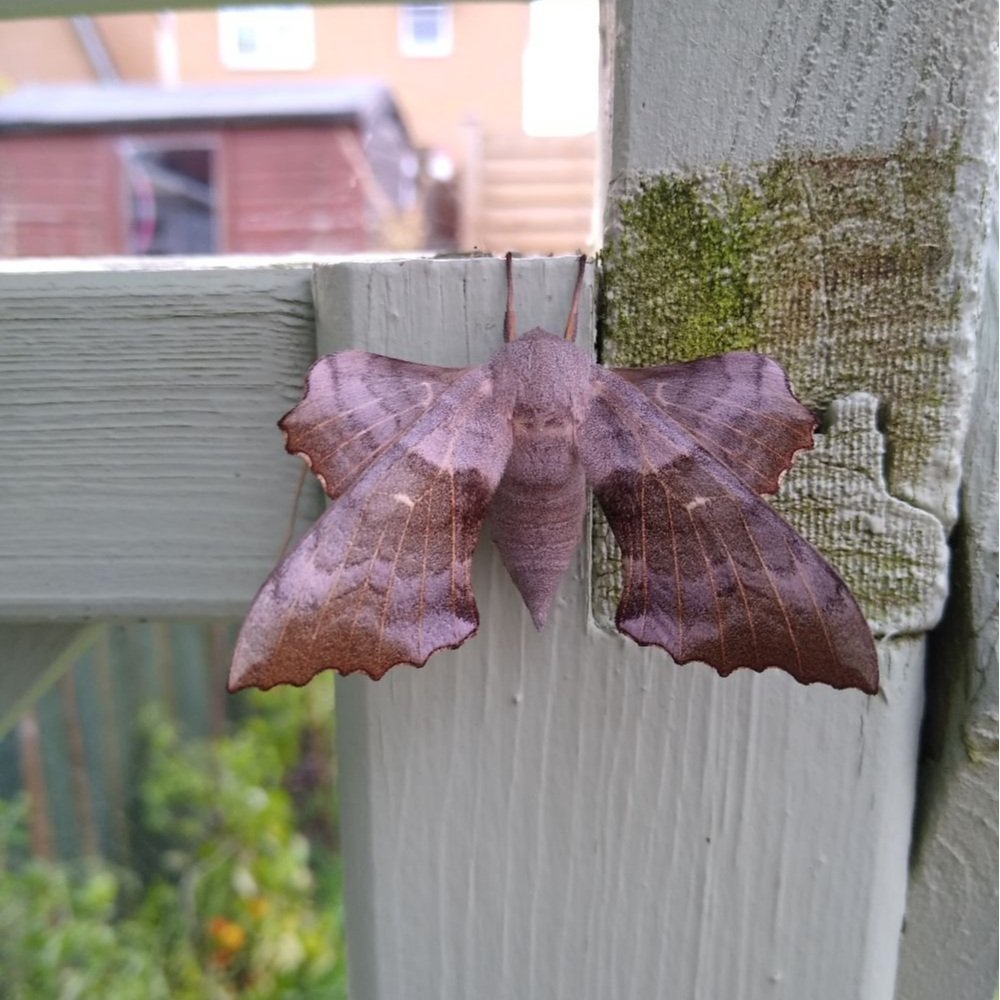Moths: fear or fascination?
The strange beauty of the stunning Poplar Hawk Moth. Photograph by Clare Langrick.
In the beauty of this magnificent Swallow-tailed Moth it isn’t hard to understand why moths have enchanted, perplexed and terrified over the years. Photograph by Mac.
The fear of moths, Lepidopterophobia, certainly isn't one that all of us can relate to. But what is it about this beloved taxa that ignites terror in many a member of the general public?
Well moths aren’t the only animal that scare us, although they do share common features with a few of the other big ‘baddies’ out there. Firstly, being an insect doesn’t help, despite the importance of insects in the ecosystem, the default attitude towards them tends to be of disgust. Associations of uncleanliness, infestation and invasion come to mind, perhaps due to the species of insects that we consider pests, such as lice and bed bugs. Moths can be perceived as pests, although the clothes-eating habits of just a couple of species give the rest of the family a bad name, they can cause a fair bit of damage to the plants in your garden (as well as pollinate them, and a wealth of other benefits…). The other feature of insects that perhaps has negative connotations, is the fact they are often found in large numbers, due to reproduction by the laying of eggs. This likely feeds into the idea of invasion and uncontrollability, despite also relating to a vital features of insects as a food source for other animals. On the other hand, alongside bats, wolves and other nocturnal species, the relationship of moths to the night and darkness, also likely contributes to their reputation.
Mythology revolving around animals is common in cultures and civilizations all around the world, the ubiquitous presence of insects in every corner of the globe, means they often take a leading role in these stories. Insects take both negative and positive roles in mythology, from the biblical references of locust swarms, symbolical of an evil force, to the Japanese traditional symbol of the soul as a butterfly. Moths feature in stories from a range of different cultures, but tend to share the common theme of death and the afterlife. Native American cultures see moths as messengers from the spirit world, whilst Celtic traditional stories tell of moths as the mediator between the living and the dead. The Hebrew word for moth is “ash”, which simply means death, and moths are thought to symbolise the destruction and punishment of those who pursue the wrong path.
The infamous Death’s-head Hawkmoth of 1991 horror The Silence of The Lambs.
The association between moths and light has fascinated humans for centuries, and this relationship is surely one that has spurred on the telling of many myths and stories. Whilst thought to be symbolic of inspiration and enlightenment, the danger of flying close to the 'flame', is also thought to represent the possibility that the pursuit of knowledge may devour you! Compare this image to that of the famous story of Icarus flying too close to the sun. Poets and writers from the Eastern world have also captured the mysticism of moths in their work. The moth and the flame is one of the most beloved metaphors of Sufi poets. It is used as an analogy for those who seek the Sufi path, and how they must seek annihilation into Divine Essence (and enlightenment). A powerful and emotive metaphor, the symbol of the moth and the flame, has clearly inspired and brought questions of life, death, knowledge, and religion to people throughout the ages.
The image of the moth also appears in modern literature, a recurrent motif in the work of well-known writers like Tennessee Williams and Virginia Woolfe. You might have also noticed the infamous Death’s-head Hawkmoth in the cult classic horror movie “Silence of the Lambs”. Themes of transformation and growth also tend to accompany images of the moth, due to the well-known metamorphosis of this animal.
Mothman has inspired many artistic impressions. Copyright James Bouseman
Modern superstition has conjured up its own moth-ly horror story in the form of West Virginian Mothman. Reportedly seen during the winters of 1966 and 1967, when a newspaper article was published entitled, "Couples See Man-Sized Bird ... Creature ... Something." Locals report seeing a horrifying figure with shining red eyes beside the road (which paradoxically appears to be scared of headlights), and one resident even blames Mothman for the disappearance of their pet German Shepherd! The tale takes a sinister turn as locals link Mothman to the tragic collapse of The Silver Bridge, which killed 46 people. Mothman even seems to have an international presence, Russian UFOlogists claim that Mothman sightings in Moscow foreshadowed Russian apartment bombings in 1999...! If you feel like indulging in this moth-ly horror story for Halloween, check out the 2002 film, The Mothman Prophecies.
Perhaps its the association with darkness and the night that ignites fear in people, or the hairy body, the pest-like properties of certain species, or simply a fear of the unknown. Either way, it is clear that moths have long captured the imagination, and that humans have been paying their respects to these mystical creatures for many thousands of years.




